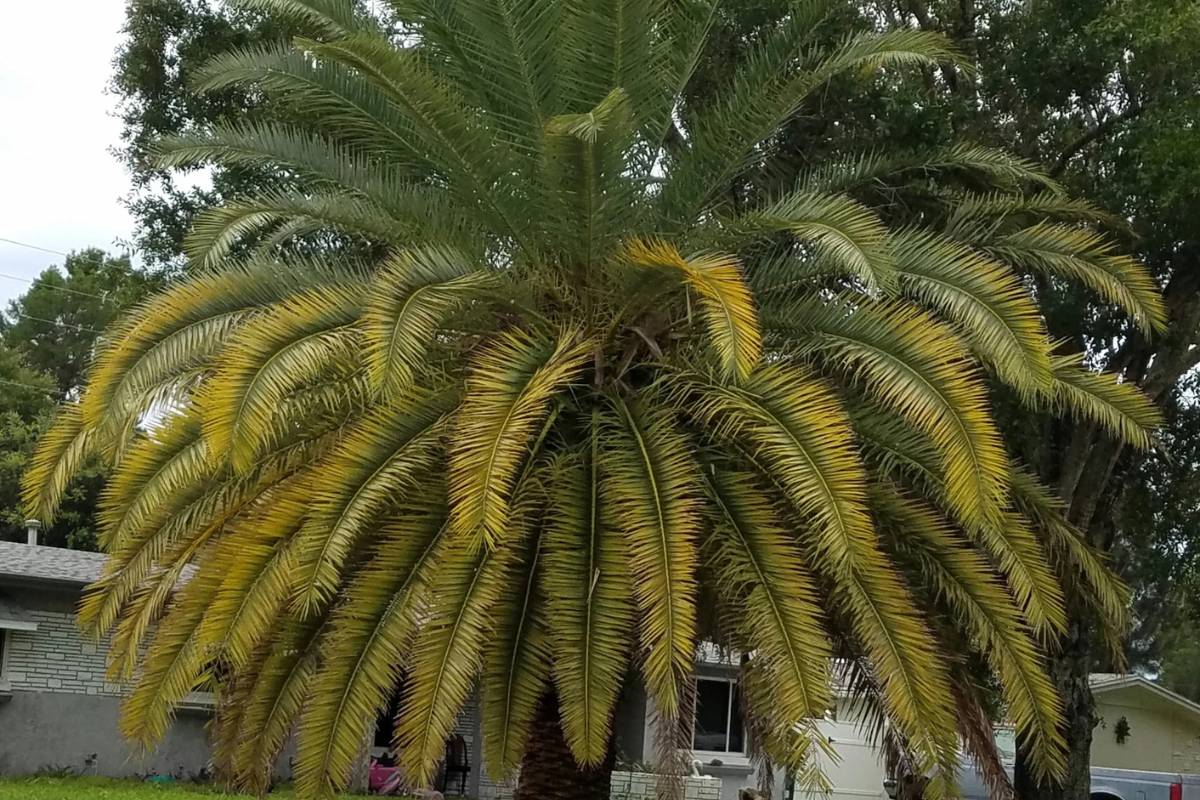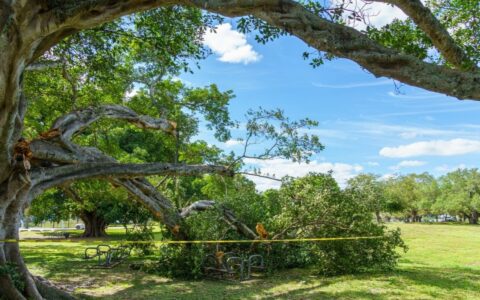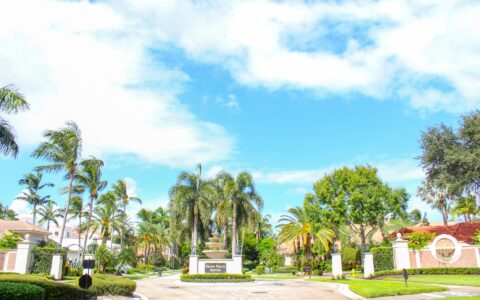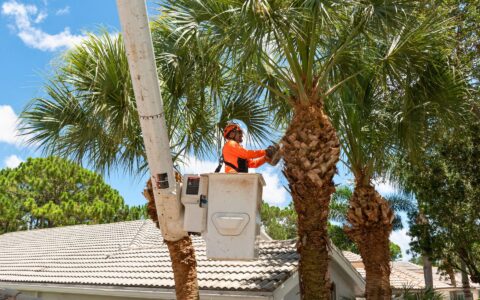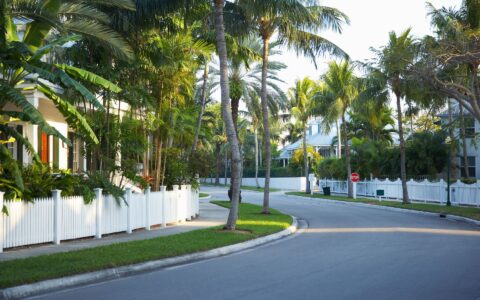Imagine strolling through your lush garden and noticing your palm trees looking less vibrant than usual. Their leaves are changing and they’re not growing as fast. Could it be a magnesium deficiency?
This silent destroyer can leave your beloved palms in poor health. Let’s explore the signs of this deficiency and learn how to correct it, restoring your palms to their full, tropical glory.
Let’s investigate just what’s wrong with your palm tree.
Magnesium Deficiency in Palm Trees – Key Takeaways
- Yellowing of older leaves, browning, and curling of leaf tips, frizzle top pattern on newest leaves, and marbled appearance of leaves are signs of magnesium deficiency in palm trees.
- Magnesium deficiency can result in reduced growth rate, stunted growth, slower growth rate, smaller leaves that don’t expand fully, and slow recovery after damage or pruning.
- Leaf drop in palm trees can be a symptom of underlying issues or poor nutrition, and it is a stress response to magnesium deficiency. It is characterized by yellow or orange spots on leaves, an alarming rate of leaf shedding, and the need for more nutrients.
- To deal with leaf drop and correct nutrient imbalance, it is important to understand that leaf drop is a distress signal and identify magnesium deficiency as a possible cause. Replenishing magnesium supply through fertilizers or Epsom salts, acting quickly to prevent further damage, and correcting nutrient imbalance are crucial for palm tree health.
Identifying Unusual Leaf Changes
You’ll notice unusual leaf changes if your palm tree is deficient in magnesium. The first sign you might spot is the yellowing of older leaves, starting from the edges and gradually moving inward. The leaf tips might even turn brown and start to curl. This isn’t a typical aging process; it’s a symptom of a nutrient deficiency. Don’t confuse this with natural leaf browning due to age or seasonal changes.
Magnesium deficiency manifests in a unique pattern called ‘frizzle top.’ The newest leaves or spear leaves at the top of the palm become thin, crinkled, and stunted, resembling the frizzled strands of hair. Also, you’d see the older leaves become chlorotic, that is, turning yellowish while the veins remain green. This gives the leaves a marbled appearance, another telltale sign.
Remember, these changes don’t happen overnight. If you’re observant, you’ll spot the signs early and can take corrective action. Don’t ignore these changes, as prolonged deficiency can lead to a severe decline in your palm tree’s health. It’s essential to supplement the tree’s diet with a good-quality magnesium-rich fertilizer to restore its vibrancy and prevent long-term damage
Recognizing Reduced Growth Rate
If your tropical plants aren’t growing as fast as they usually do, it might be due to a lack of a certain mineral. Specifically, magnesium deficiency can cause a palm tree’s growth rate to slow down noticeably. It’s vital to note this sign as it might be less visible than other symptoms.
Here are three key signs that your palm tree’s growth rate might be suffering due to magnesium deficiency:
- Stunted Growth – The most obvious sign is that your palm tree might not be growing as tall or as fast as it used to. The tree appears to be stunted or slower in growth rate.
- Reduced Leaf Size – A magnesium-deficient palm tree might have smaller leaves. The leaves may not expand to their full potential, resulting in a less lush appearance.
- Slow Recovery – If your palm tree has been damaged or pruned, it may take longer than usual to recover. This slow recovery is often a sign of a deficiency in essential minerals, including magnesium
So, if you notice any of these signs, it’s time to inspect your palm tree carefully and provide it with the necessary nutrients. By doing so, you can ensure the healthy growth and longevity of your tropical plants.
Dealing with Leaf Drop
When dealing with leaf drops, it’s crucial to understand that this could be a symptom of an underlying issue with your tropical plant. Palm trees, particularly those suffering from magnesium deficiency, often display this distress signal. The leaves don’t just fall off without a reason; it’s typically a reaction to stress or poor nutrition.
In this case, the stressor is a lack of magnesium. So, if your palm tree is shedding leaves at an alarming rate, don’t panic. There’s a good chance that it’s merely trying to tell you that it needs more nutrients.
If you’re not sure whether a magnesium deficiency is the cause, look for other signs. These may include yellow or orange spots on the leaves, particularly on older ones. Magnesium deficiency often starts with the older leaves and works its way up to the new growth.
Don’t let your palm tree suffer in silence. Act quickly to replenish its magnesium supply. This can be done through a fertilizer high in magnesium or by applying Epsom salts directly to the soil. Remember, your palm tree can’t communicate its needs verbally, but it can show you through its leaves.
Correcting Nutrient Imbalance
Correcting nutrient imbalance in your tropical plants is crucial for their overall health and survival. A magnesium deficiency can cause severe damage to your palm trees if left unattended. It’s important to recognize the signs early and take immediate action to restore the balance of nutrients.
One way to correct this imbalance is through the application of magnesium sulfate, also known as Epsom salts. It’s a simple and effective method used by many gardeners. Here are some steps to follow:
- Identify the affected palm trees: Look for yellowing or browning between the leaf veins, a sign of magnesium deficiency.
- Purchase Epsom salts: They’re readily available in garden stores or online.
- Dilute the Epsom salts: Use about 2 tablespoons per gallon of water.
- Apply the solution: Water the base of your palm trees thoroughly with the solution.
Don’t forget to monitor the progress after the application. It might take several weeks before you see improvements. If the symptoms persist, you might need to apply a more concentrated solution or seek professional help.
It’s essential to maintain a healthy balance of nutrients to ensure your palm trees thrive and flourish.
Magnesium Deficiency in Palm Trees – Frequently Asked Questions
What are the common causes of magnesium deficiency in palm trees?
Magnesium deficiency in palm trees can be caused by several factors. It’s often due to poor soil quality, inadequate watering, or the tree’s inability to absorb magnesium from the soil. Over-fertilization can also contribute.
How can magnesium deficiency in palm trees be prevented?
You might think it’s tough, but preventing magnesium deficiency in palm trees isn’t rocket science. Simply apply a balanced, slow-release fertilizer that includes magnesium and follow a regular watering schedule. It’s as easy as that!
Are there specific palm tree species that are more susceptible to magnesium deficiency?
Yes, certain palm species are more prone to magnesium deficiency. Queen palms and pygmy date palms, for instance, often exhibit this issue. Regular soil tests can help you monitor and manage this problem effectively.
What is the effect of magnesium deficiency on the overall lifespan of a palm tree?
Imagine your palm tree’s life cut short. Magnesium deficiency doesn’t just mar its beauty, it can also reduce its lifespan. Without this vital nutrient, your palm tree may not live out its full, lush life.
Can a severely magnesium-deficient palm tree be revived, and if so, how?
Yes, a severely magnesium-deficient palm tree can be revived. You’d need to apply a balanced, slow-release fertilizer that includes magnesium. Regular application and proper watering can help restore its health.
Do Your South Florida Palms Need Some Help?
A magnesium deficiency isn’t a death sentence, not on our watch!
Call Sherlock Tree Company today at 954-788-4000. We’re Southern Florida’s tree and palm health experts. Let us show you why we’re the top tree and palm service company in the area!
Proudly serving all of South Florida including Broward, Palm Beach, and Miami-Dade Counties!
Call Sherlock for quality tree services
Whether you're looking for specific tree care services, such as palm trimming, tree removal, or disease treatments, or would like one of our Arborists to examine your trees to identify any issues and recommend options, we're always here for you! Just give us a call at 954-788-4000 to set up an appointment.
SEE MORE ARTICLES
Looking for more?
We've got you covered with a monthly newsletter full of tips, resources, updates, how-to's, and other helpful information about trees and landscapes in South Florida!

